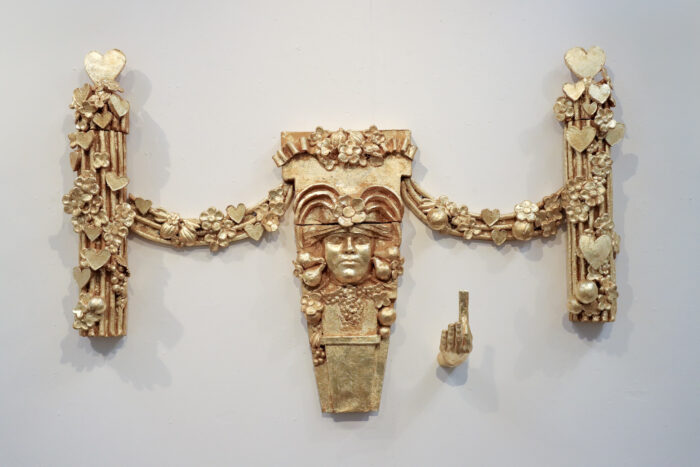Q&A with Le Kilt

The beauty of craft is that it spans multiple disciplines.
Feature by Anya at Zetteler
Scottish designer Samantha McCoach founded fashion brand Le Kilt in 2014 with the vision to modernise her family’s traditional kilt-making heritage. Samatha’s grandmother has been a traditional kilt maker for 40 years and throughout her teenage years, Samantha would often sit and watch her grandmother perfect her craft.
Le Kilt strives to modernise traditional kilt-making processes yet craftsmanship remains central to its practice. “Our dedication to craft is a very purposeful attempt at helping people understand the work and time that goes into making clothing,” says Samantha.
For London Craft Week 2018, the brand is joining forces with experimental design consultancy NORN to host an exhibition exploring the re-appropriation of traditional materials through craftsmanship. A selection of ephemera that informs the luxury brand has been hand-picked for inclusion in the exhibition and will be displayed alongside items that illustrate both modern and traditional craft techniques.
Ahead of London Craft Week in May, Zetteler caught up with Samantha to find out more about Le Kilt and the importance of craftsmanship in fashion.
You founded Le Kilt with the vision of modernising traditional kilt-making. Why did it need modernising?
We believe it is really important to safeguard the future of our shared heritage. These traditional crafts often have their foundation in local communities therefore by championing these unique skills we are also supporting individuals from a grassroots level.
How are you modernising kilt-making?
We want to take all the traditional aspects of kilt-making and incorporate it into a modern woman’s wardrobe. Le Kilt’s collection extends beyond kilts to include knitwear, denim, accessories and footwear. By considering its place amongst these other garments, we feel it firmly establishes the kilt as a key essential. Who we work with is also an important part of our brand story – we like to think of it as our ‘Family Tree”. By using the brand as a platform to educate people about our manufacturers and suppliers, we are spreading awareness to a modern audience.
Kiltmaking is part of your family heritage. Can you tell us a little about your family’s history as traditional kilt makers and why it was important that you continue furthering this heritage?
My grandmother was a kilt-maker in Scotland for over 40 years. She moved over from Italy in her late teens and got a job working for John Morrison, a well-known kilt company on Edinburgh’s Royal Mile. The very first Le Kilt was made from a piece of Black Watch tartan found in a drawer, which was gifted to her by her former boss 30 years prior.
As a fashion brand, why is it important to be involved in the craft industry? Do you see Le Kilt as a fusion of craft and fashion?
We think it is important to draw parallels between craft and fashion to remind people of its importance, particularly in the age of fast fashion. As a small brand, we find it impossible to compete with the high street, and our dedication to craft is a very purposeful attempt at helping people understand the work and time that goes into making clothing.
Your London Craft Week event explores the reappropriation of traditional materials through craftsmanship. Can you tell me about this need for material innovation and re-appropriating in the current fashion landscape?
By using traditional materials and techniques in an innovative way, it gives garments a degree of value and also builds a personal connection with the wearer. This is something that is often lost when consumers think of clothing as disposable.
Tell us about the collaboration with NORN, why are you a good match?
We worked with NORN on the development of our International Woolmark Prize collection. We think that their approach to weaving, a traditional practice, using unconventional materials and techniques is something truly innovative and exciting. We shared very similar values and wanted to further explore new ways of working together.
The event also explores punk subculture. To what extent is tartan’s identity still intertwined with punk subculture?
Tartan will always be synonymous with punk. The punk movement itself was about subverting tradition as a statement. We always incorporate an element of this into our garments. For example, for AW18 we have been unravelling classic tartans and weaving the yarns into patches in our own nod to punk.
For more information, or to read the full press release see here.


